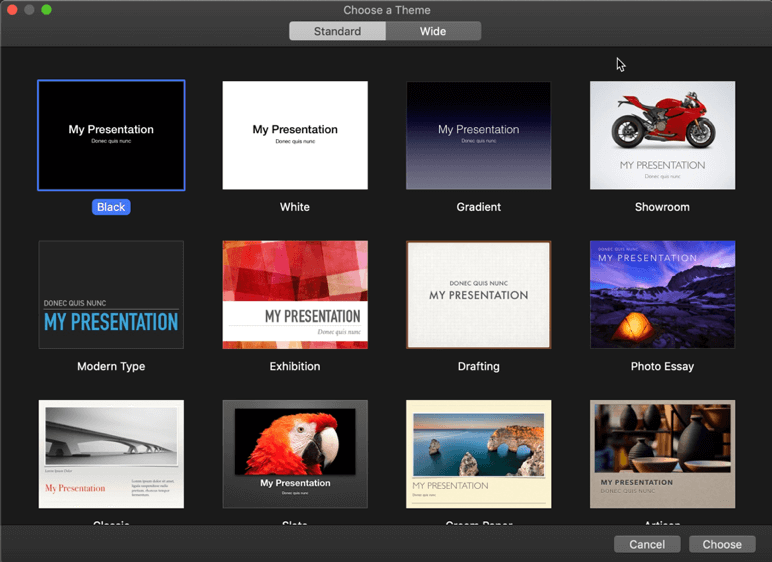

You can start the slideshow and then share its window in a videoconferencing app, so you don’t have to show the raw Keynote interface at all before you start the presentation, as you do with a full-screen slideshow. The presentation window can be resized and moved around. My trick combines that new presentation option with the Keynote for iOS/iPadOS app.Īpple added Play > Play Slideshow in Window to Keynote, which presents slides with full interactivity in a regular window instead of the previously required single- or dual-monitor full-screen mode.

With a new option introduced in July by Apple to Keynote, however, you can have more control and flexibility, particularly if you want to switch among other apps or remain largely in the videoconferencing app while presenting. (Keynote does offer the option to press H-not Command-H, but simply H-to hide Keynote in presentation mode and return to the previous app without breaking out of full-screen mode.) Zoom can show a resizable strip of the participants watching the session, for instance. Some conferencing tools (including Zoom), let you have access through floating overlays to certain features.

However, even with all that monkeying about, you must remain in Keynote to present. Instead, you switch back to Zoom, use its screen-sharing option to select the Keynote slide window, then return to Keynote and start the presentation. In Zoom, for instance, you have to open the Keynote slide deck and not enter slideshow mode ( Play > Play Slideshow). Full-screen app mode in macOS in general doesn’t interact well with Google Meet, Microsoft Teams, Zoom, and other videoconferencing tools, because you typically must stay in the app that’s gone full screen to keep it working in that fashion. In the new world of always-online meetings, whether professional or social club, you might have frequently been frustrated, even if you have two monitors at home. In a normal two-screen Keynote presentation, slides occupy one screen (as at top), while presenter’s tools, including notes, fit on another screen. Keynote fills that second screen with a variety of presenter’s tools, like notes, thumbnails of the previous and next slides, and a time-elapsed clock. One is typically a projector or large monitor the other, a laptop screen or computer screen in front of the presenter. Keynote is designed best for presenters to work across two screens.


 0 kommentar(er)
0 kommentar(er)
